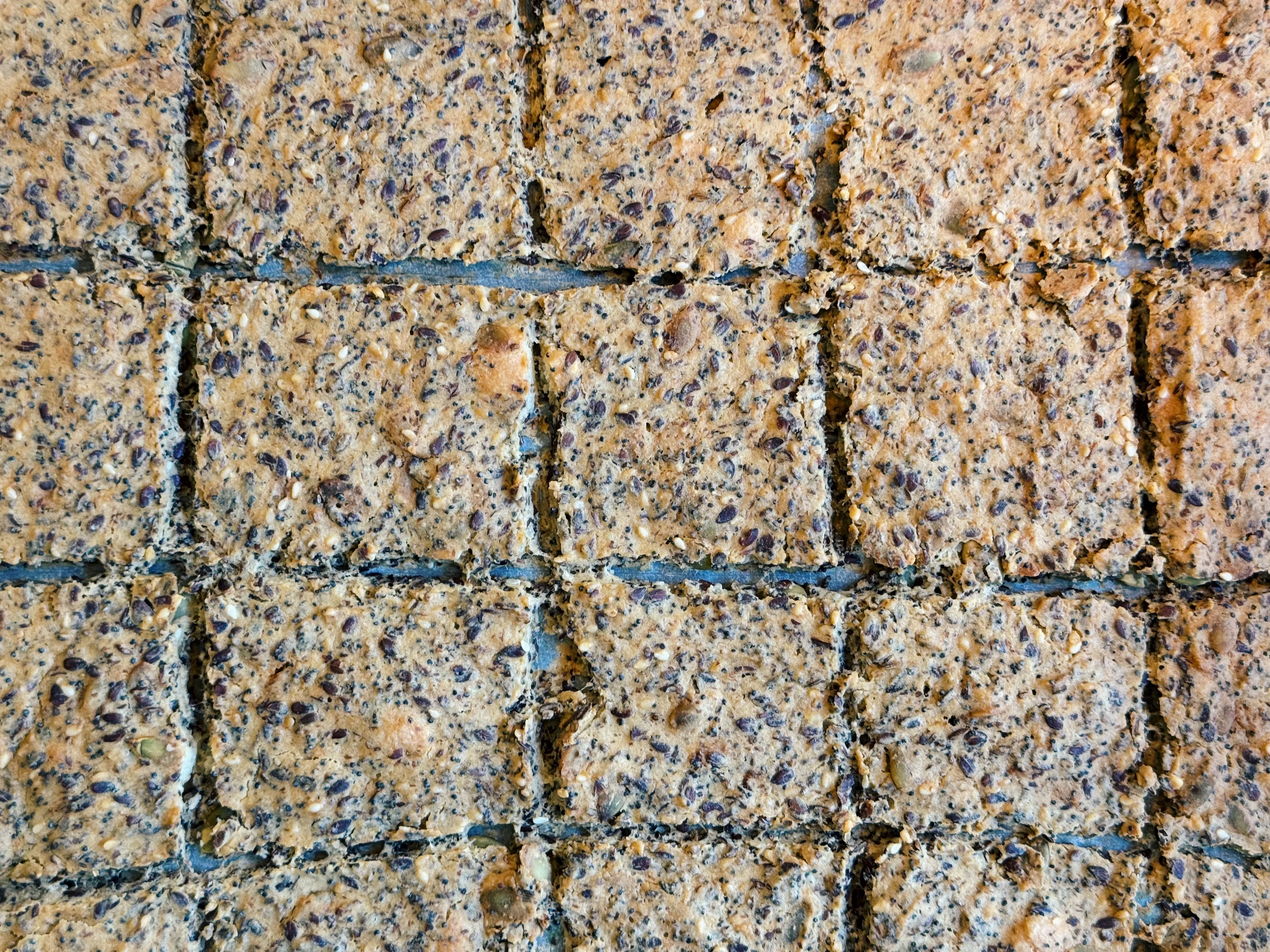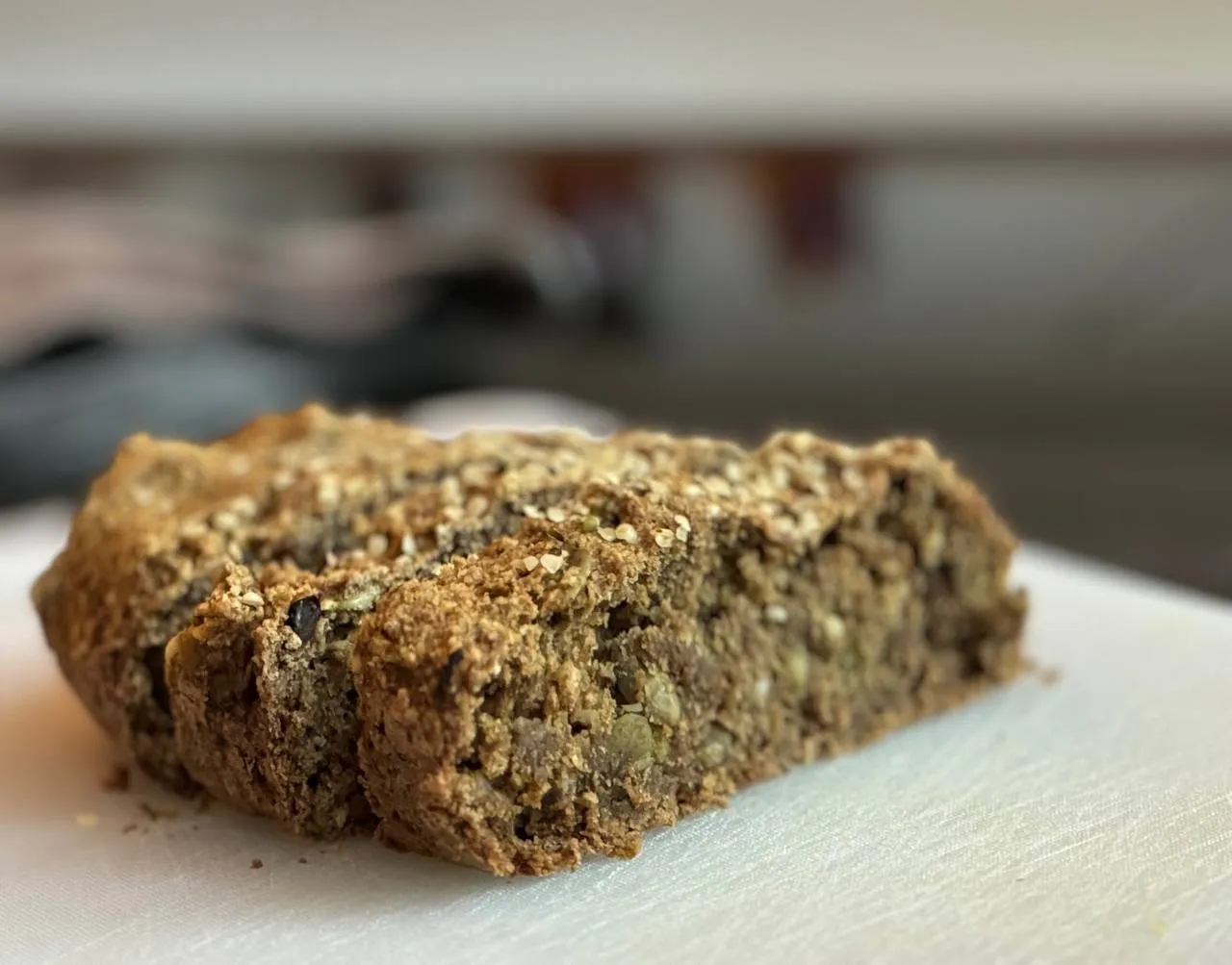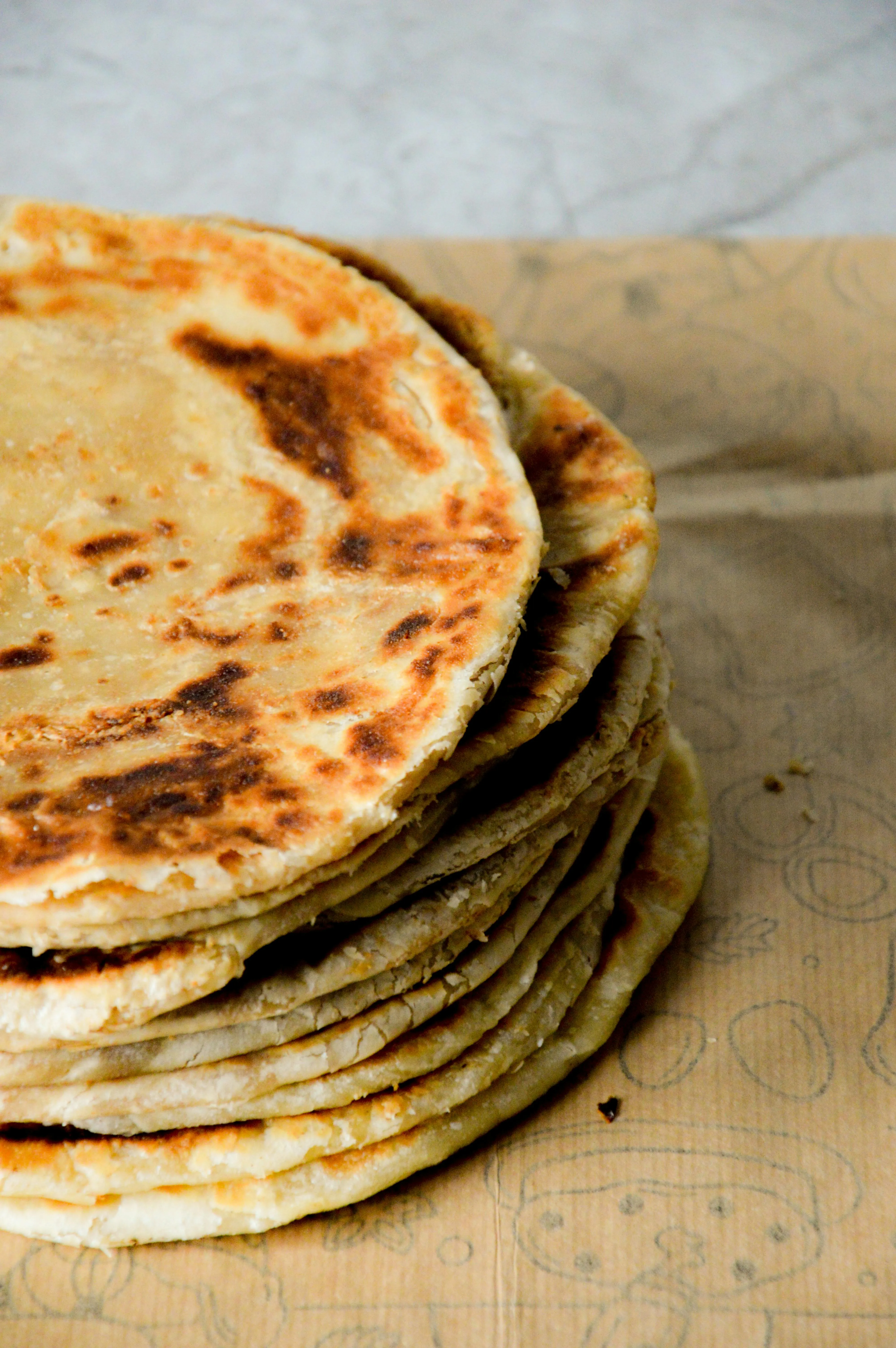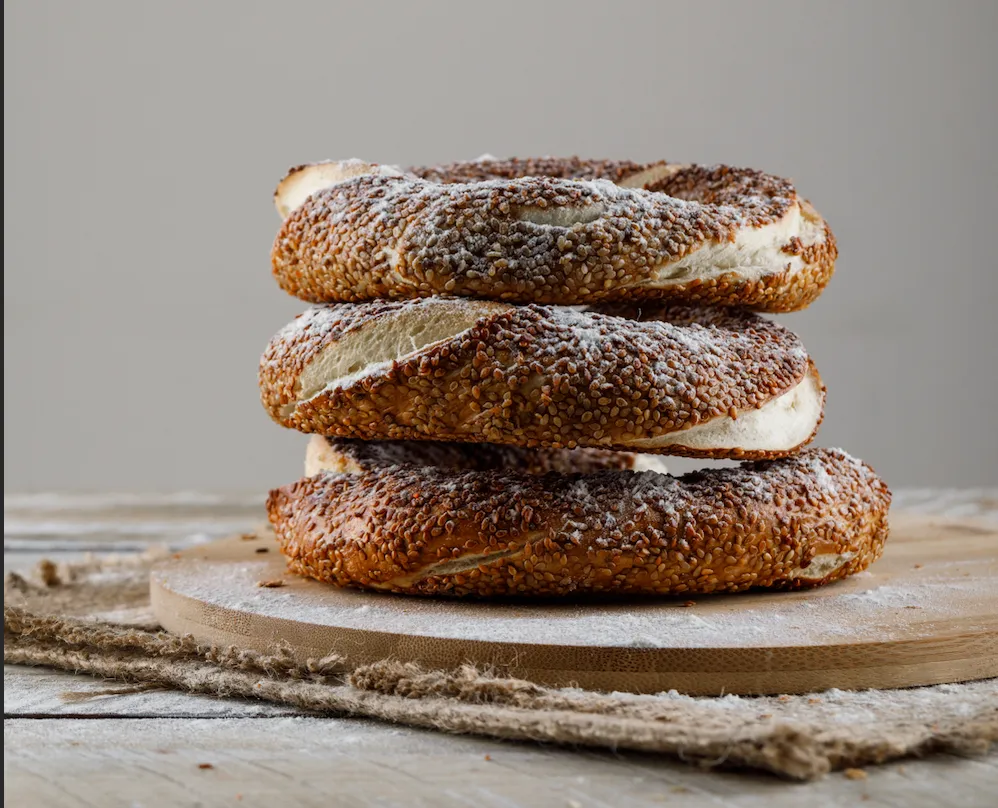
A gluten-free bread option. Minimal ingredients and minimal effort. Surprisingly easy to make, yet with a complex and textured flavor. Gentle on the digestive system and free from antinutrients.
- 450 g green buckwheat
- ~3 cups water (for soaking the buckwheat)
- 300-330 ml water (for the dough)
- 1 tsp. salt
- 1/3 cup pumpkin seeds (or a mix of pumpkin, hemp, sunflower, pine nuts, and sesame seeds)
- 3 tbsp. toasted flaxseeds
- a handful of seeds for topping
Soak the green buckwheat for 24–36 hours. You can leave it on a cool windowsill overnight and then move it to the refrigerator, or simply soak it in water and leave it in the fridge for 2–3 days. The goal is to "activate" and awaken the seeds, which green buckwheat does quickly. If you tightly seal the container with plastic wrap or leave it in an overly warm place, such as on a radiator, an unpleasant odor and unwanted fermentation may occur. Avoid extreme conditions: 24–36 hours in water without extremes is ideal.
The buckwheat will become sticky and viscous. Use a sieve to drain excess water, but do not rinse it.
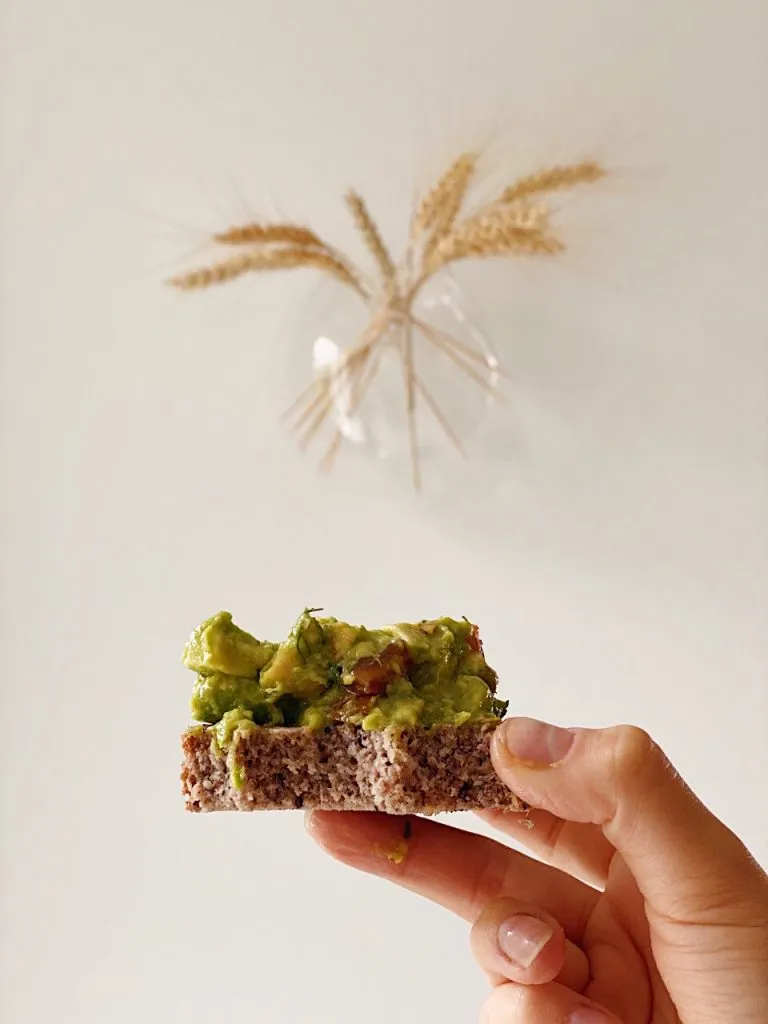
Next, blend the buckwheat with water (330 ml) in a blender. Transfer the mixture to a large bowl and cover it with a towel. Allow it to ferment for approximately 12 hours at room temperature. During this time, do not disturb the dough — avoid moving it or mixing it.
After 12 hours, gently mix in the salt, pumpkin seeds, and flaxseeds.
Transfer the dough into a baking form lined with parchment paper. Sprinkle additional seeds and flaxseeds on top. Let it rest for 30–60 minutes in a warm place. The bread can be shaped into a loaf, baguettes, or rolls, and baked in a silicone mold.
Bake for 1 hour 20 minutes at 180-200°C. For two thin baguettes, 45 minutes is enough, and for small rolls, 25–30 minutes will suffice. Remove the bread from the oven and place it on a cooling rack to cool slightly. Allow the bread to rest for at least 30 minutes before slicing.
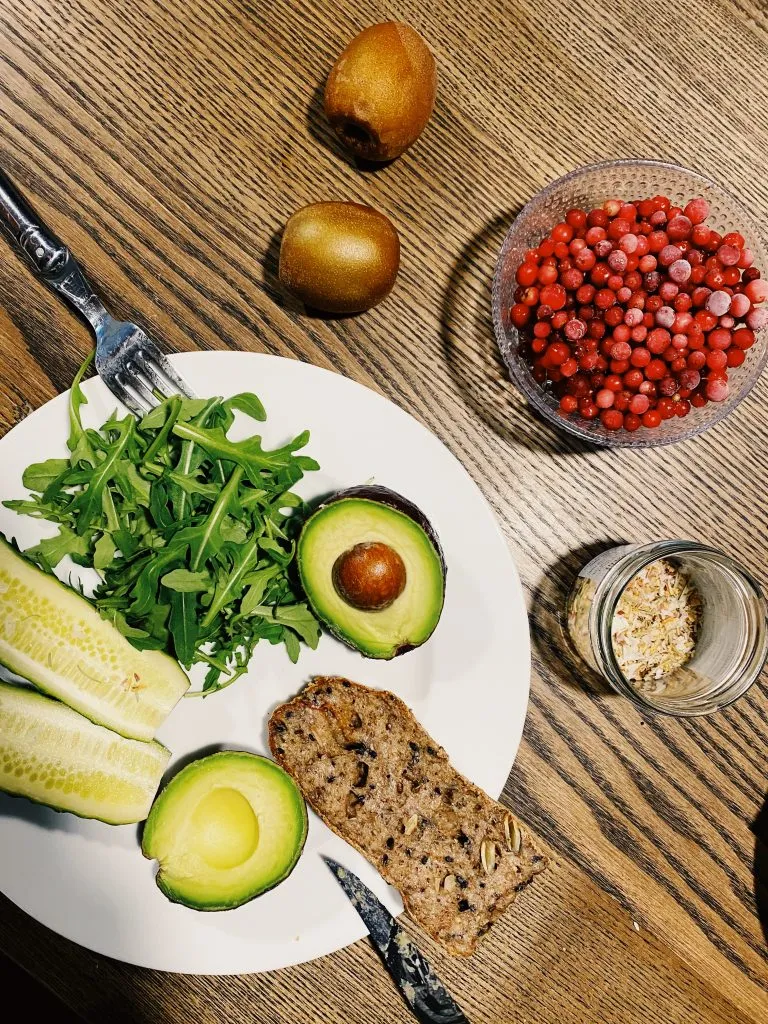
Soak the green buckwheat for 24–36 hours. You can leave it on a cool windowsill overnight and then move it to the refrigerator, or simply soak it in water and leave it in the fridge for 2–3 days. The goal is to "activate" and awaken the seeds, which green buckwheat does quickly. If you tightly seal the container with plastic wrap or leave it in an overly warm place, such as on a radiator, an unpleasant odor and unwanted fermentation may occur. Avoid extreme conditions: 24–36 hours in water without extremes is ideal.
The buckwheat will become sticky and viscous. Use a sieve to drain excess water, but do not rinse it.

Next, blend the buckwheat with water (330 ml) in a blender. Transfer the mixture to a large bowl and cover it with a towel. Allow it to ferment for approximately 12 hours at room temperature. During this time, do not disturb the dough — avoid moving it or mixing it.
After 12 hours, gently mix in the salt, pumpkin seeds, and flaxseeds.
Transfer the dough into a baking form lined with parchment paper. Sprinkle additional seeds and flaxseeds on top. Let it rest for 30–60 minutes in a warm place. The bread can be shaped into a loaf, baguettes, or rolls, and baked in a silicone mold.
Bake for 1 hour 20 minutes at 180-200°C. For two thin baguettes, 45 minutes is enough, and for small rolls, 25–30 minutes will suffice. Remove the bread from the oven and place it on a cooling rack to cool slightly. Allow the bread to rest for at least 30 minutes before slicing.


